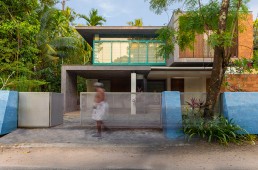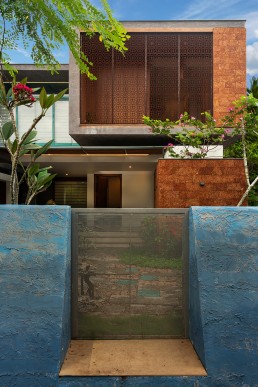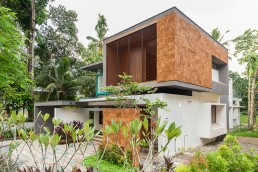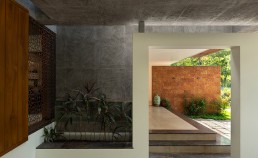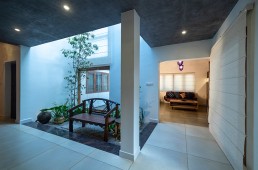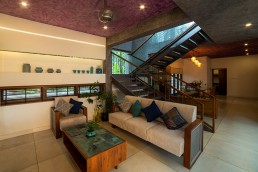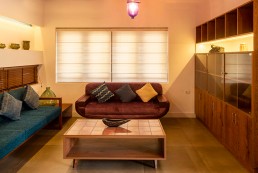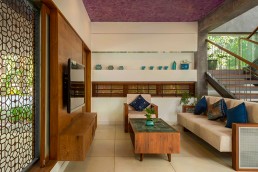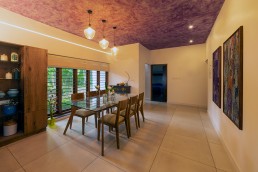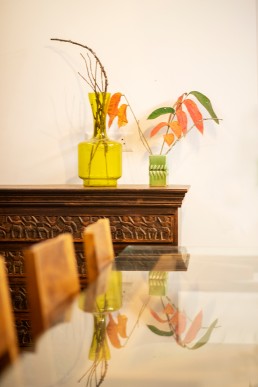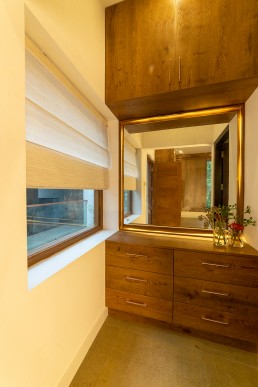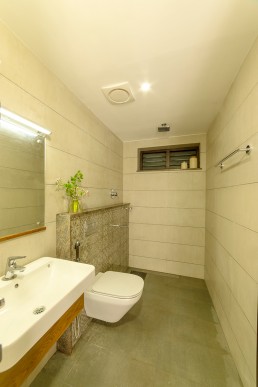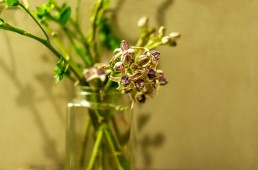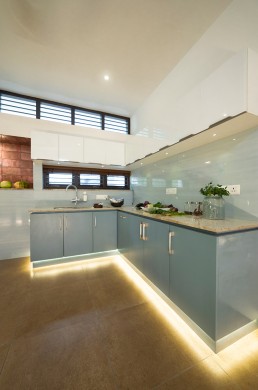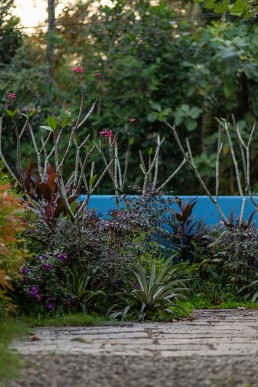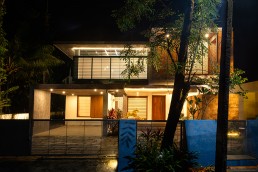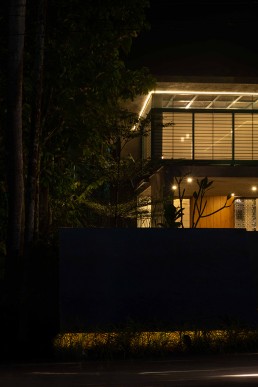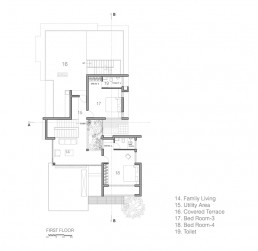‘Manjadi’- The house of the Bead tree
The project is a climatically efficient home rooted in the cultural context of India,which is the result of several iterations and explorations through a continuous design process. The house is built on a West facing site, with a remarkable old Bead tree, commonly called ‘Manjadi’, right at the entrance. This leguminous tree with a rough textured bark, bright polished red seeds and vibrant green leaves inspired the project, from the inception of design.
It has an open plan with freely flowing spaces and connected volumes to overcome the limitations of a linear foot print. The green court and water garden added for passive cooling, acts as an open to sky, family space protected from the harsh tropical weather.
The interior of the house is defined by an interplay of light, darkness and colours. The master bedroom on the first floor opens to a linear balcony with a slidable wooden partition, for protection from the afternoon heat. It also has a weathered steel jalli on the outer façade, with an intricate water cut pattern, that filters the twilight sun. It resembles a lantern at night, paying homage to the rich craft heritage of India. The kitchen is a more utilitarian version of a traditional Asian kitchen, in pastel shades.
The colour palette displays a sharp contrast of earthen tones with different hues of blue, accentuated by a combination of warm and white lighting. Both the exteriors and interiors show hints of the magical blue, in varying shades.
The landscape design for this house introduces varying colours and textures to the native lush green flora of the tropics. The plants are individually picked to create a unique sustainable combination, that requires minimal maintenance.
Anyone who has spent their childhood roaming the green and verdant landscape of rural Kerala would have fond memories of collecting the seeds of Manjaditree that resembles rubies. The wild beauty of these seeds, combined with their relative rarity made them coveted objects to kids. This tree also forms an integral part of the cultural landscape of India depicted in many folktales and stories. This subtle addition of nature inspired aesthetics, has transformed a contemporary utilitarian house into a tropical living space, with a unique Indian identity.


